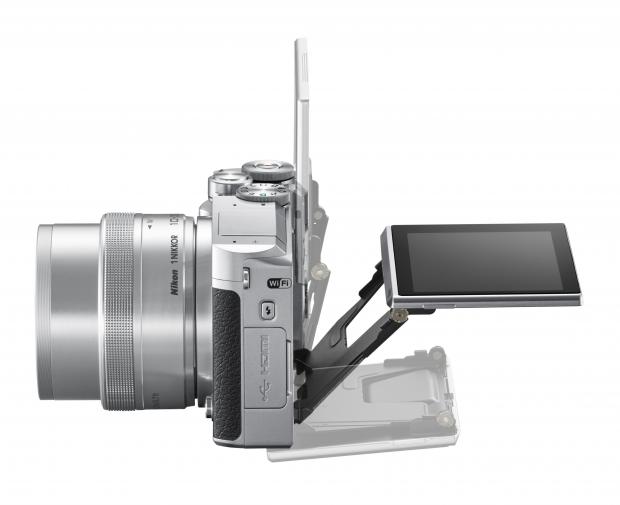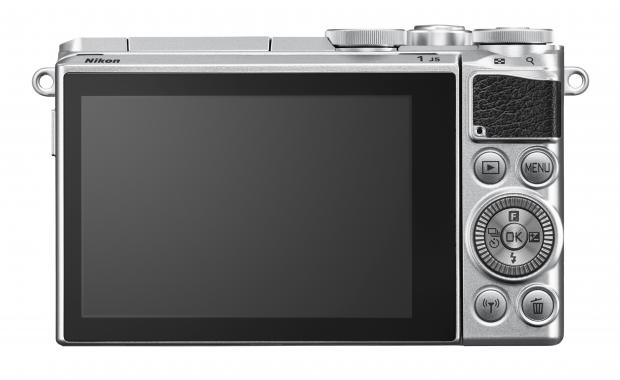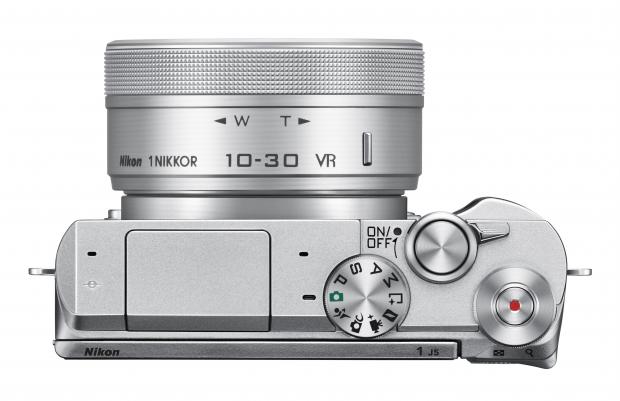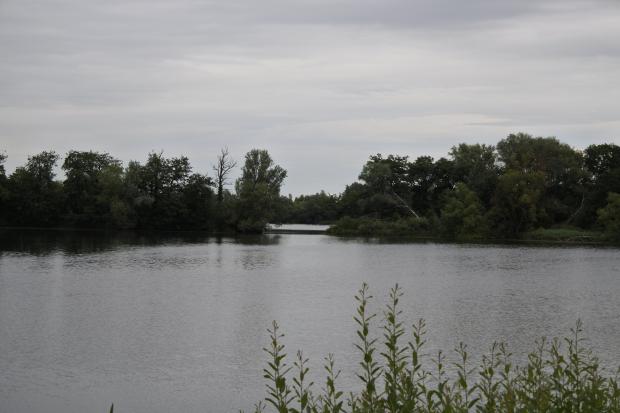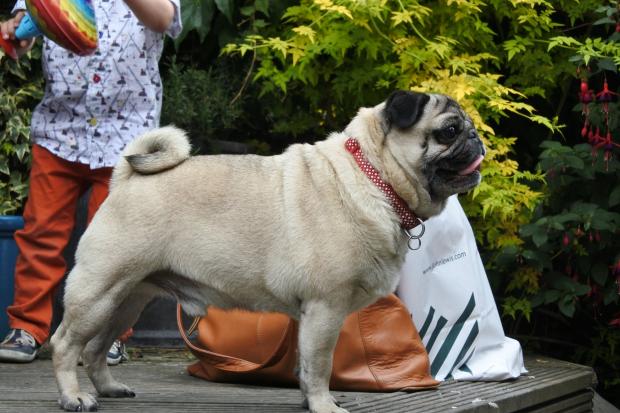Nikon J5 review
We appreciate products that dare to be different but it’s no guarantee of a positive review. The Nikon 1 J5’s predecessors have been a case in point, with plenty to distinguish them in the crowded compact system camera (CSC) market but fewer reasons to recommend them.
The J5 is a more conventional camera than previous models. There’s a contoured handgrip that makes it much easier to hold. Technically this increases the camera’s overall dimensions but it’s irrelevant once you attach a lens. The screen tilts down by 90 degrees and up by 180 for the obligatory selfie mode. Again, this may add a millimetre or two to the camera’s thickness but it’s well worth it for the ergonomic convenience it brings.
Nikon evidently still cares about keeping the size and weight of the camera down, as demonstrated by the use of a smaller battery than before, which lasts for just 250 shots. It has also stuck with a microSDXC slot. Admittedly a fast 32GB card only costs around £10 but it’s a bit annoying for anyone who already owns a stack of SD cards.
There are more physical controls than on the Nikon J4, including a command dial for quick adjustment of settings, a customisable Function button and a button to launch the Wi-Fi features. Meanwhile, a button marked “F” brings up various key settings on the touchscreen.
The mode dial includes program, aperture-priority, shutter-priority and manual modes for the first time in a J-series model. These modes were available in previous models but only via a menu option, with the mode dial playing host to various rather unorthodox shooting modes. These cameras were clearly being targeted at casual users who aren’t interested in conventional manual controls. There’s nothing particularly wrong with that except that we believe a camera should be able to satisfy both types of user – and convert casual photographers into enthusiasts.
The J5 proves the point. Those unorthodox modes are still available alongside the more conventional ones on the mode dial. They make more sense in this context, presented as interesting diversions rather than integral aspects of the camera’s operation. We still haven’t warmed to Motion Snapshot mode, which captures a short slow-motion video and a photo and plays them back with some sickly sweet music. Best Moment Capture is more useful, capturing 20 frames in one second including 10 from before the shutter button was fully pressed. It then selects what it thinks is the best one to keep, but you can select any or all of the 20.
The sensor can capture 20-megapixel photos at speeds up to 60fps, but there’s not a huge benefit to having 20 virtually identical photos. Outside of the scene presets, continuous mode took about 50 seconds to save all 20 frames in JPEG format, or 90 seconds in RAW format. The 20fps, 10fps and 5fps modes are more useful because focus can be updated between each frame. This wasn’t hugely reliable but there were enough sharp frames to make the mode worthwhile.
Considering its impressive continuous mode and autofocus performance, the J5 is disappointingly slow in normal use. It took 2.1 seconds on average between shots, although this fell to 0.5 seconds after we disabled Image Review in the menu. On other cameras, pressing the shutter button again immediately after capture interrupts image review so the camera can get on with taking another photo. Half a second between shots is what we’d expect regardless of the Image Review setting.
Advanced Movie mode unlocks priority and manual exposure control, slow-motion, fast-motion and time-lapse options and a 4K mode. The latter is limited to 15fps, which makes it little more than a novelty in our view. There’s no option to save 4K video frames as 8-megapixel JPEGs, as various recent Panasonic cameras allow.
The 1080p video mode is decent enough, with a choice of 30 or 60fps frame rates and a reasonably sharp, clean picture. Autofocus was responsive but it’s not possible to control the autofocus point unless electronic stabilisation is disabled in the menu.
Nikon 1 cameras use a 1in sensor, the same size that’s used with great success in the Sony RX100 III and Canon G7 X. It’s a smaller sensor size than is used by most compact system cameras (CSCs), but this allows the camera and lens to be smaller too.
The J5 is smaller than most CSCs, but only marginally and it’s actually 64g heavier than thePanasonic GM5, which uses a sensor that’s almost twice the size by surface area. Meanwhile, both the Canon G7 X and Sony RX100 III are lighter and substantially slimmer than the J5 and they include wide-aperture lenses that give a significant boost to image quality in low light. The J5’s sensor size and aperture are equivalent to a f/9.4-15 aperture on a full-frame camera, which means less captured light than the Panasonic GM5 (f/7-11.2) and significantly less than the Sony RX100 III and Canon G7 X (both f/4.9-7.6).
Image quality
Specs don’t tell the whole story, though, and the J5 put in a solid performance in our image quality tests. Noise levels were only marginally higher than from the GM5 and lower than the G7 X and RX100 III for a given ISO speed. However, the latter two’s wider apertures meant they could easily beat the J5 for a given shutter speed, giving significantly better results in low light.
The 20-megapixel sensor and kit lens captured plenty of detail and colours were lifelike. Metering was generally well judged but the balance of shutter speed, ISO speed and aperture settings was a little odd at times. It used its widest available aperture even in bright light, and while focus was generally sharp across the frame, the depth of field was sometimes narrower than we’d ideally like. Meanwhile, low-light shots were mostly at a fixed 1/60s shutter speed, regardless of the zoom position or whether there was any movement in the scene. Other cameras’ automatic modes are more sophisticated and make better decisions to minimise noise and motion blur.
^ This high-contrast scene has been metered well and focus is sharp into the corners of frames. (1/640s, f/5.6, ISO 160, 81mm equivalent)
^ The sunlit grass in the foreground is razor sharp but we’d have preferred a slower shutter speed and narrower aperture to improve sharpness of the background. (1/250s, f/4.5, ISO 250, 45mm equivalent)
^ Again, this macro shot would have benefited from a narrower aperture to get the whole of the bee in sharp focus. (1/500s, f/5.6, ISO 200, 81mm equivalent)
^ The J5’s sensor and JPEG engine have no problem picking up the subtleties of skin textures in well-lit conditions. (1/320s, f/3.5, ISO 200, 27mm equivalent)
^ Image quality at ISO 800 is excellent. This is much closer to SLR than compact camera quality. (1/80s, f/5.6, ISO 800, 81mm equivalent)
^ Setting the shutter speed manually to 1/200s to avoid motion blur means a fast ISO speed. There’s not much sign of noise but noise reduction has given skin a plastic-like sheen. (1/200s, f/5.6, ISO 3200, 81mm equivalent)
Conclusion
We’ve grumbled quite a bit in this review, but the J5 is a perfectly respectable camera. It’s petite and comfortable to use, it has a solid collection of features and its photo and video quality are unlikely to disappoint. There’s no shortage of excellent cameras around the £400 mark, though, and the J5’s distinguishing features don’t lie in its favour. It makes the user choose between features that should be available simultaneously, such as image reviews and responsive performance. Image quality in low light is unexceptional and requires manual intervention for best results. Battery life is poor and the use of microSD cards is a bit annoying.


